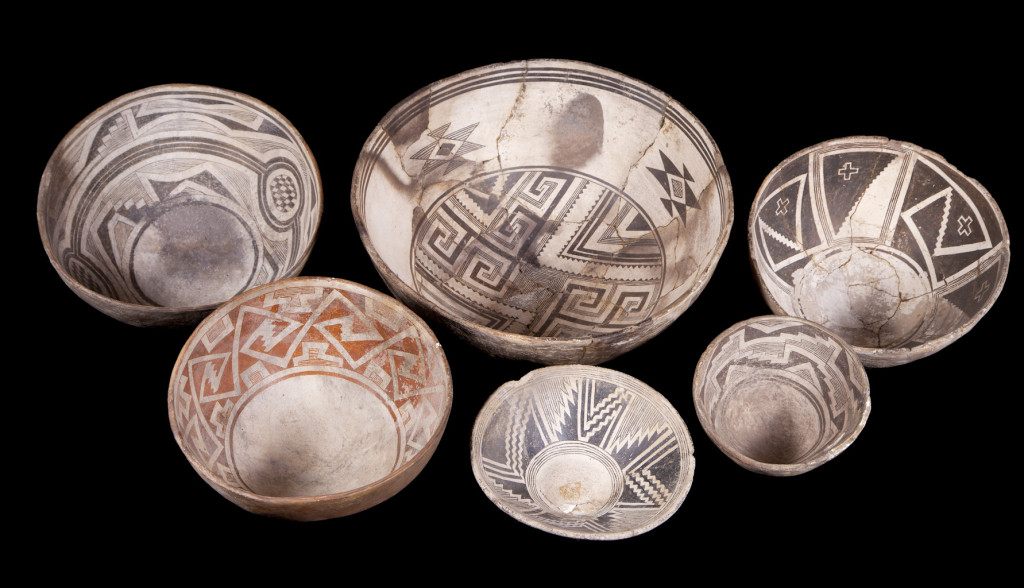
Mimbres painted pottery. Photo Credit: Dan Boone/Ryan Belnap, Bilby Research Center, Northern Arizona University.
The Mimbres people, also called Mimbrenos, were concentrated around the Mimbres River in southwestern New Mexico from around A.D. 800 – 1250. The name Mimbres is a Spanish word meaning “willows,” which grew abundantly along the banks of the Mimbres River. Earlier house architecture and pottery styles bear strong resemblance to the broader Mogollon culture of the Southwest, and Mimbres people shared many similarities with other prehistoric Puebloan cultures, including village life that evolved into relatively large pueblos, a mixed subsistence strategy of hunting-gathering and agriculture, and use of kivas for ceremonial and community purposes. The Mimbres culture is perhaps best known for the production of elaborately painted black-on-white pottery depicting human figures, realistic animals, and geometric designs. Parrots and saltwater fish depicted on some pots indicate that Mimbres people traveled widely, maintaining ties with people far to the south. The Classic Mimbres period ended around A.D. 1130. The larger communities were abandoned and the pottery styles changed. However, the people continued, reorganizing themselves in smaller communities, and later, becoming part of the Tularosa tradition to the north and the Southern Desert phenomenon to the south.
